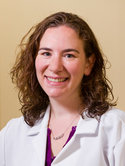ASTCT and USCLC clinical practice recommendations for allogeneic stem cell transplant in mycosis fungoides and Sézary syndrome Guidelines
| Authors: | Goyal, A.; O'Leary, D.; Dabaja, B.; Weng, W. K.; Zain, J.; Cutler, C.; Guitart, J.; Kim, Y. H.; Geskin, L. J.; Hoppe, R. T.; Wilson, L. D.; Beaven, A. W.; Horwitz, S.; Allen, P. B.; Barta, S. K.; Bohjanen, K.; Brammer, J. E.; Carter, J. B.; Comfere, N.; DeSimone, J. A.; Dusenbery, K.; Duvic, M.; Huen, A.; Jagadeesh, D.; Kelsey, C. R.; Khodadoust, M. S.; Lechowicz, M. J.; Mehta-Shah, N.; Moskowitz, A. J.; Olsen, E. A.; Poh, C.; Pro, B.; Querfeld, C.; Sauter, C.; Sokol, L.; Sokumbi, O.; Wilcox, R. A.; Zic, J. A.; Gru, A.; Hamadani, M.; Foss, F. |
| Title: | ASTCT and USCLC clinical practice recommendations for allogeneic stem cell transplant in mycosis fungoides and Sézary syndrome |
| Abstract: | Introduction: Mycosis fungoides (MF) and Sézary syndrome (SS) are the most common subtypes of cutaneous T-cell lymphoma. While MF generally follows an indolent course, a subset of patients will experience progressive and/or treatment-refractory disease. SS is an aggressive cutaneous T-cell lymphoma associated with high morbidity and mortality secondary to immune compromise and opportunistic infection. Although allogeneic hematopoietic cell transplant (allo-HCT) is currently the only available potentially curative treatment modality for MF/SS and is included in the National Comprehensive Cancer Network and the American Society for Transplantation and Cellular Therapy treatment guidelines, there is no published guidance regarding referral criteria, timing and allo-HCT approach to help guide clinicians caring for these patients. Methods: Delphi survey of 32 specialists in dermatology (n = 9), transplant hematology/oncology (n = 10), nontransplant hematology/oncology (n = 8), and radiation oncology (n = 5) from across the United States. Consensus required agreement of ≥75% of participants. Results: Sixteen consensus statements were generated on 4 topics: 1) criteria for referral for consideration for allo-HCT, 2) allo-HCT preparative regimens and procedures, 3) disease status at the time of allo-HCT, and 4) multidisciplinary management in the pre- and post-transplant settings. Conclusion: These clinical practice guidelines provide a framework for decision-making regarding allo-HCT for MF/SS and highlight areas for future prospective investigation. © 2025 American Academy of Dermatology, Inc. |
| Keywords: | stem cell transplant; cutaneous t-cell lymphoma; radiation oncology; dermatology; mycosis fungoides; reduced intensity; transplant; sezary syndrome; conditioning; allogeneic; total body irradiation; graft-versus-host; hematopoietic stem cell transplant; hematology/oncology; allogeneic stem cell transplant; myeloablative; total lymphoid irradiation; matched related donor; matched unrelated donor; total skin electron beam; tsebt |
| Journal Title: | Journal of the American Academy of Dermatology |
| Volume: | 93 |
| Issue: | 2 |
| ISSN: | 0190-9622 |
| Publisher: | Mosby Elsevier |
| Publication status: | Published |
| Date Published: | 2025-08-01 |
| Start Page: | 387 |
| End Page: | 397 |
| Language: | English |
| DOI: | 10.1016/j.jaad.2025.04.005 |
| PUBMED: | 40199382 |
| PROVIDER: | scopus |
| DOI/URL: | |
| Notes: | Source: Scopus |
Altmetric
Citation Impact
BMJ Impact Analytics
Related MSK Work




